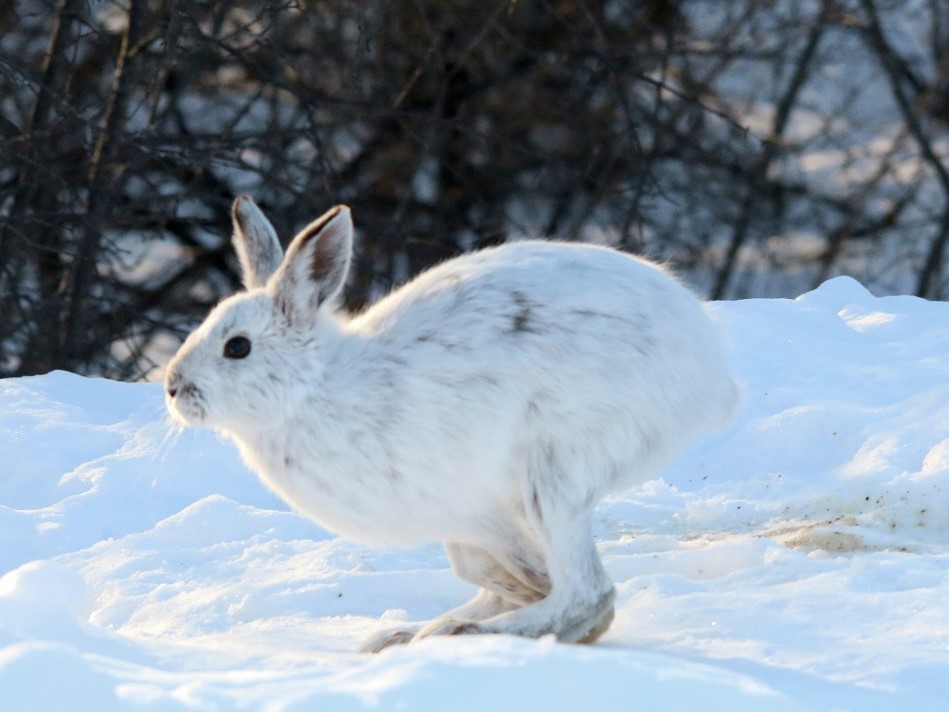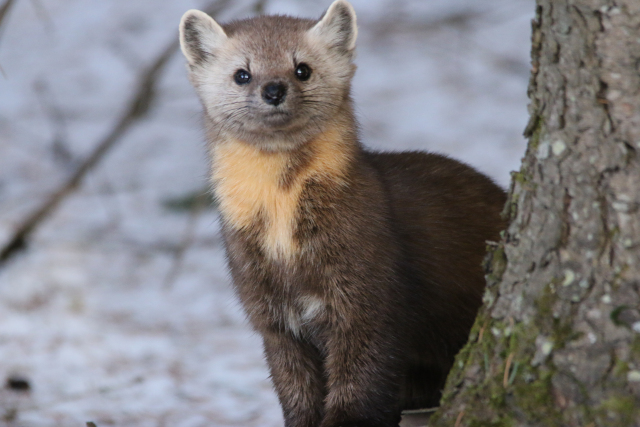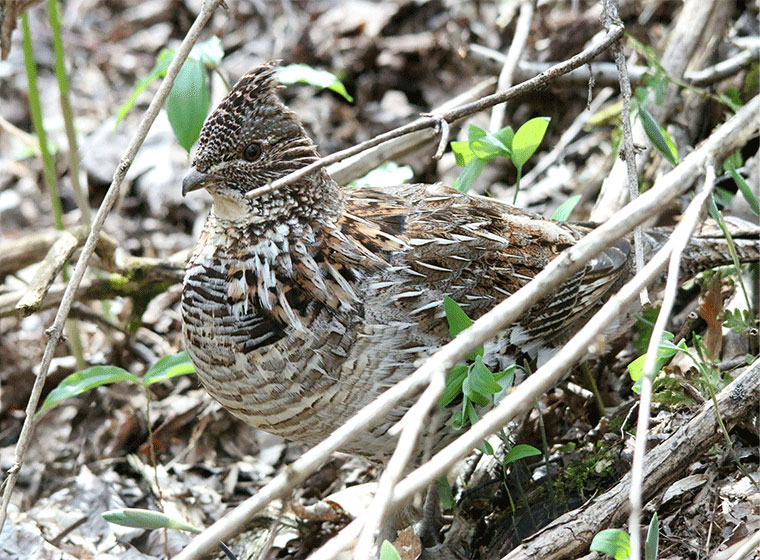Overview
Small game and furbearing mammals live in most habitats and landscapes across Ontario.
They are an important part of ecosystems throughout the province. These species are important to our wildlife heritage because they have cultural and economic significance for Indigenous peoples and the people of Ontario.
Small game and furbearing mammals include:
- beaver
- eastern cottontail (rabbit)
- gray/black squirrel
- marten
- red fox
- ring-necked pheasant
- ruffed grouse
- snowshoe hare
- spruce grouse
- other similar small to medium-sized wildlife species
In Ontario, the management of small game and furbearing mammals is guided by the Small game and furbearer management framework.
Small game and furbearing mammal hunting
What you need to know before hunting small game and furbearing mammals in Ontario, including rules, licensing and where and when to hunt.
Hunting regulations summary
Read the rules and regulations for hunting small game and furbearing mammals in Ontario, including season dates and bag limits.
Licensing
What you need before you can hunt small game and furbearing mammals in Ontario.
In some municipalities in Southwestern Ontario, you may also need a municipal licence to hunt ring-necked pheasant, cottontail (rabbit) and hare. Find these municipalities by viewing the map of Wildlife Management Units in Southwestern Ontario in the Hunting Regulations Summary.
Wildlife Management Units
Use these maps to identify the boundaries of your Wildlife Management Unit (WMU) to find species-specific seasons and bag limits.

Other small game and furbearing mammal hunting opportunities
Game bird hunting preserves
Learn more about hunting on Game Bird Hunting Preserves in Ontario and what you need to know if you want to release small game birds for hunting on private land.
Hunt small game with birds of prey (falconry)
Read about hunting small game with falcons, including the:
- rules and requirements
- small game species that may be hunted using falcons
- types of licences you will need
- falconry seasons and limits for various small game species
Hunt migratory game birds
Migratory game birds including ducks, geese, doves and woodcock are the responsibility of the federal government. These species are managed through the Migratory Birds Convention Act, 1994. Visit the Canadian Wildlife Service website for information on migratory bird conservation, research, regulations, monitoring and permits.
To learn more about the requirements for hunting migratory game birds in Ontario:
- read the federal government’s Summary of Migratory Birds Hunting Regulations: Ontario, August 2022 to July 2023
- visit the “Migratory game birds” heading under the Small game and furbearing mammals section of the Ontario Hunting Regulations Summary
Furbearing mammal trapping
Trapping is culturally significant for many Ontarians and Indigenous communities. It is an important source of income for many residents of northern and rural communities. Trapping is also an effective wildlife management tool for furbearing species such as coyote, beaver and raccoon, and helps maintain sustainable populations.
Trapping is an effective tool for managing populations of furbearing mammals and humanely removing animals that may impact crops, livestock or communities. We manage the harvest of furbearing mammals to ensure sustainable populations now and in the future.

Trapper harvests
Review open data for provincially licensed trapper harvests by species, species group and licence year.
Furbearing mammal pelts
It is illegal to abandon or allow the pelt (the untanned skin) of a furbearing mammal to spoil or be destroyed.
Trapping in Ontario
What you need to know before trapping furbearing mammals in Ontario, including rules, required training and licensing, and where and when to trap.
Ontario Trapping Regulations Summary
Read our Ontario trapping regulations summary to learn about trapping methods, licences, possession, buying and selling furbearers, harvest reporting, open seasons and other related regulations.
Trap requirements
Possessing and using traps in Ontario is strictly regulated under the Fish and Wildlife Conservation Act, 1997 and its regulations. Ontario’s trapping regulations support commitments in the Agreement on the International Humane Trapping Standards.
Find a list of legal traps which may be used in Ontario under Schedule 1 and Schedule 2 of the trapping regulations. Licensed trappers may only use traps that meet animal welfare standards and requirements in the regulations.
Keep, buy or sell a pelt
Read about the rules for possessing the pelt of a furbearing mammal for personal or commercial use.
Tan, treat or preserve pelts
What you need to know if you are hiring a tanner or taxidermist to tan, treat or preserve the pelt of a furbearing mammal or if you plan to treat the pelt yourself.
Small game and furbearing mammal research and monitoring
Our wildlife research and monitoring program includes research on small mammal, furbearing mammals, and game bird populations, habitats and diseases including rabies.
Explore scientific and technical publications issued by our researchers since 2004. You can find small game and furbearing mammal publications by:
- Searching for “wildlife” in the search table bar.
- Scanning through the article titles to find topics you are interested in.
Small game and furbearing mammal health
The following are some diseases and parasites that can affect the health of small game and furbearing mammals. Some can potentially affect human health:
- Avian influenza
- canine distemper
- rabies
- sarcoptic mange
- tularemia (rabbit fever)
- West Nile virus
- white nose syndrome
Visit our Fish and wildlife health page to learn about our programs to minimize the impact of wildlife disease in Ontario.
Prevent and manage conflicts
Learn how to prevent property damage, and conflicts with:
